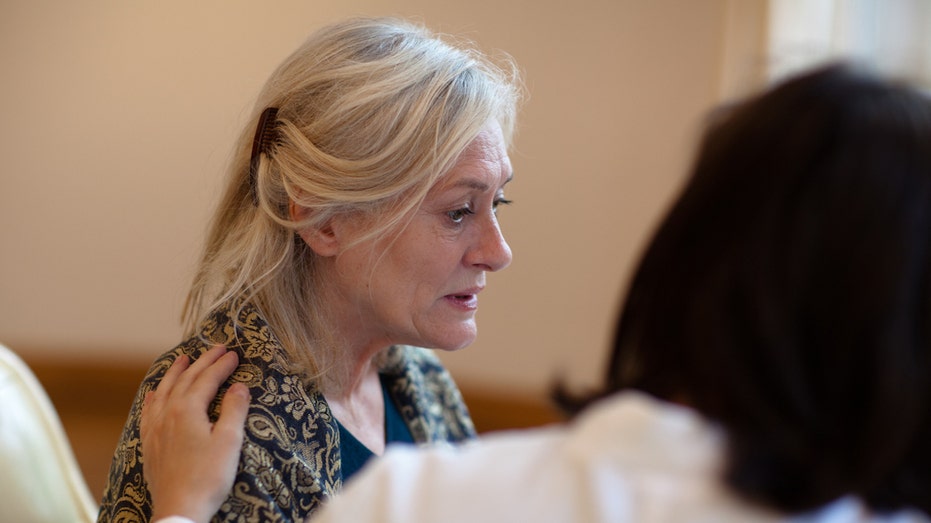As many as 80% of aging adults in America lack the financial resources to pay for two years of nursing home care or four years of an assisted living community.
That’s according to a new study from the National Council on Aging (NCOA) and the LeadingAge LTSS Center at the University of Massachusetts Boston.
Additionally, 60% of older adults — or 24 million households — would not have the funds to pay for in-home long-term care, despite the fact that they would prefer to “age in place,” per a report from NCOA.
Researchers analyzed 2018 data from the Health and Retirement Study, which was a joint effort by the National Institute on Aging and the Social Security Administration that surveyed some 20,000 U.S. adults about their net wealth.
IN ALZHEIMER’S STUDY, SLEEPING PILLS ARE SHOWN TO REDUCE SIGNS OF DISEASE IN THE BRAIN
When the researchers first began looking at the data several years ago, they were initially surprised to see that so many older adults were at significant risk of financial insecurity, Dr. Jane Tavares, a lead researcher at the LTSS Center at UMass Boston, told Fox News Digital.
“There is a common misconception that older adults are asset-rich, but we have found in our research that this is not generally true,” she said.
Dr. Tavares also noted, “We expect that there will probably be some worsening once we examine data for the time period covering the COVID pandemic.”
The national average cost for assisted living is around $4,500 per month, according to the 2021 Cost of Care Survey from Genworth, a Virginia-based company that helps older adults with financial planning.
“The cost of assisted living can vary significantly depending on the location and level of care needed,” said Dr. Steven Norris, a senior health and care expert who is also the medical director at Transitions Care in Chicago, Illinois.
“As the population continues to age and demand for these services grows, it is likely that the cost will continue to rise,” he said.
With the widespread shortage of qualified caretakers, facilities are having to pay more to secure the right people, the doctor explained.
“Additionally, recent increases in minimum wage requirements and changes in overtime payment legislation are increasing assisted living costs,” he said.
The cost could range from $3,000 in rural areas to $7,000 to $9,000 in urban locations, noted Bennett Kim, a senior housing expert and CEO of Las Vegas-based ZNest. It’s an online platform designed to help older adults find places to live.
Upscale assisted living could be higher than $12,000 per month.
“For decades, there has been a lack of awareness of how expensive assisted living really is,” Kim told Fox News Digital.
“Some people thought health insurance would cover long-term care costs, while other people optimistically believed that they would live a healthy life forever.”
The pandemic hasn’t helped matters, as the industry saw a surge in operating expenses, Kim said.
“Assisted living companies had to continually raise prices just to keep up with their costs, but retirees did not see the same growth in savings or investments,” he added.
Middle-aged and older adults are now facing a very different financial landscape than the generations before them did, Tavares pointed out.
“For starters, greater longevity comes with a higher cost, as well as a higher risk of facing serious chronic health conditions,” she told Fox News Digital.
WEIGHT LOSS IN OLDER ADULTS ASSOCIATED WITH RISK OF DEATH, STUDY SHOWS
Additionally, the increases in household income and assets have not been large enough to keep up with the rising costs of living, health care and inflation, she added.
And even when older adults do have assets, they are often tied up in property and not readily available to help them cover costs, Tavares explained.
The changing retirement model has also contributed to gaps in savings.
While past generations had private, employer-sponsored pensions that provided predictable payments, many Americans now rely on 401(K) accounts, which leave individuals responsible for saving enough money to cover their retirement years, Tavares said.
“With all of this combined, few older adults have any kind of significant savings in retirement accounts — and most can’t afford long-term care insurance that would help cover the expensive costs of assisted living or nursing home care,” she explained.
ADDITIONAL EXERCISE POTENTIALLY LINKED TO LONGER LIFESPANS AND LOWER DEATH RATES: STUDY
“This means there is a greater reliance on Social Security income and social safety net programs like Medicaid.”
There are over 2,500 public state and federal benefit programs designed to boost older adults’ economic security — but many of them are not being used to their full extent, according to Tavares.
“Many of these programs are under-enrolled, with individuals not realizing they exist or not knowing about their eligibility status and how to apply,” she told Fox News Digital.
In 2020, an estimated $30 billion of public benefits went unused each year, per the National Council on Aging.
“These programs are an important buffer for financial insecurity, and it’s critical that they are properly utilized and maintained by state and federal governments,” Tavares said.
Education is seen as another key component of improving seniors’ financial stability.
SECRETS OF STAYING AGELESS: FOUR FLORIDA SENIORS REVEAL HOW TO HIT A HOME RUN FOR GOOD HEALTH
“This means educating individuals about retirement savings and strategies for determining when to file for Social Security that take into consideration their sources of retirement income/savings, health and realistic retirement goals,” Tavares said.
“Individuals need to be thinking about and preparing for how they will weather a likely financial shock as they age,” she added, “and policymakers need to be prepared for the heavy financial burden that will likely fall on public state and federal benefit programs and begin crafting solutions for handling that burden.”
CLICK HERE TO SIGN UP FOR OUR HEALTH NEWSLETTER
Some older adults may have the option to tap into their home equity to fund their retirement, but Tavares said they need resources that help them understand and navigate that process.
There is also a clear need for policymakers to improve long-term care coverage, according to Tavares.
“With private long-term care insurance being unaffordable for most older adults, it is key to begin considering combined public and private initiatives that can put the cost of coverage within reach and make it more appealing to consumers,” she said.
The LTSS Center at UMass Boston and the National Council on Aging plan to continue updating these reports as new data becomes available.
Researchers are already working on analyzing the impact of the COVID pandemic on these financial trends, Tavares said.
Article Source: Health From Fox News Read More




